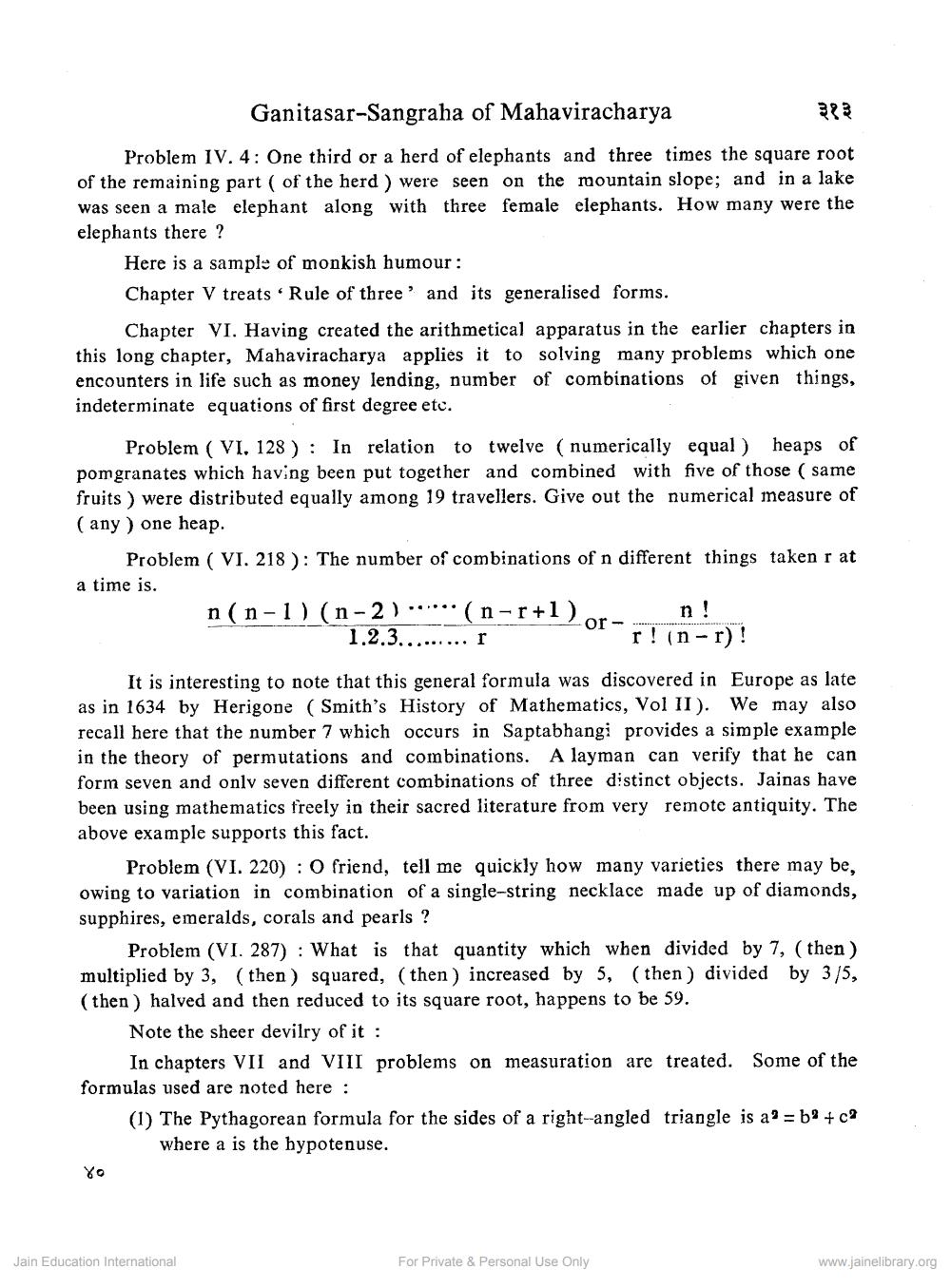Book Title: Ganitasara Sangraha Author(s): B B Bagi Publisher: Z_Acharya_Shantisagar_Janma_Shatabdi_Mahotsav_Smruti_Granth_012022.pdf View full book textPage 3
________________ Ganitasar-Sangraha of Mahaviracharya ३१३ Problem IV.4: One third or a herd of elephants and three times the square root of the remaining part ( of the herd ) were seen on the mountain slope; and in a lake was seen a male elephant along with three female elephants. How many were the elephants there? Here is a sample of monkish humour: Chapter V treats · Rule of three' and its generalised forms. Chapter VI. Having created the arithmetical apparatus in the earlier chapters in this long chapter, Mahaviracharya applies it to solving many problems which one encounters in life such as money lending, number of combinations of given things, indeterminate equations of first degree ete. Problem ( VI, 128 ) : In relation to twelve (numerically equal ) heaps of pomgranates which having been put together and combined with five of those ( same fruits ) were distributed equally among 19 travellers. Give out the numerical measure of (any) one heap. Problem ( VI. 218 ): The number of combinations of n different things taken r at a time is. n(n-1)(n-2) ""*" (n-r+1) ore n ! 1.2.3.........r r! (n-r ! Or It is interesting to note that this general formula was discovered in Europe as late as in 1634 by Herigone (Smith's History of Mathematics, Vol II). We may also recall here that the number 7 which occurs in Saptabhangi provides a simple example in the theory of permutations and combinations. A layman can verify that he can form seven and only seven different combinations of three distinct objects. Jainas have been using mathematics freely in their sacred literature from very remote antiquity. The above example supports this fact. Problem (VI. 220) : 0 friend, tell me quickly how many varieties there may be, owing to variation in combination of a single-string necklace made up of diamonds, supphires, emeralds, corals and pearls ? Problem (VI. 287) : What is that quantity which when divided by 7, (then) multiplied by 3, (then) squared, (then) increased by 5, (then) divided by 3/5, (then ) halved and then reduced to its square root, happens to be 59. Note the sheer devilry of it : In chapters VII and VIII problems on measuration are treated. Some of the formulas used are noted here : (1) The Pythagorean formula for the sides of a right-angled triangle is a' = b + c? where a is the hypotenuse. Jain Education International For Private & Personal Use Only www.jainelibrary.orgPage Navigation
1 2 3 4
